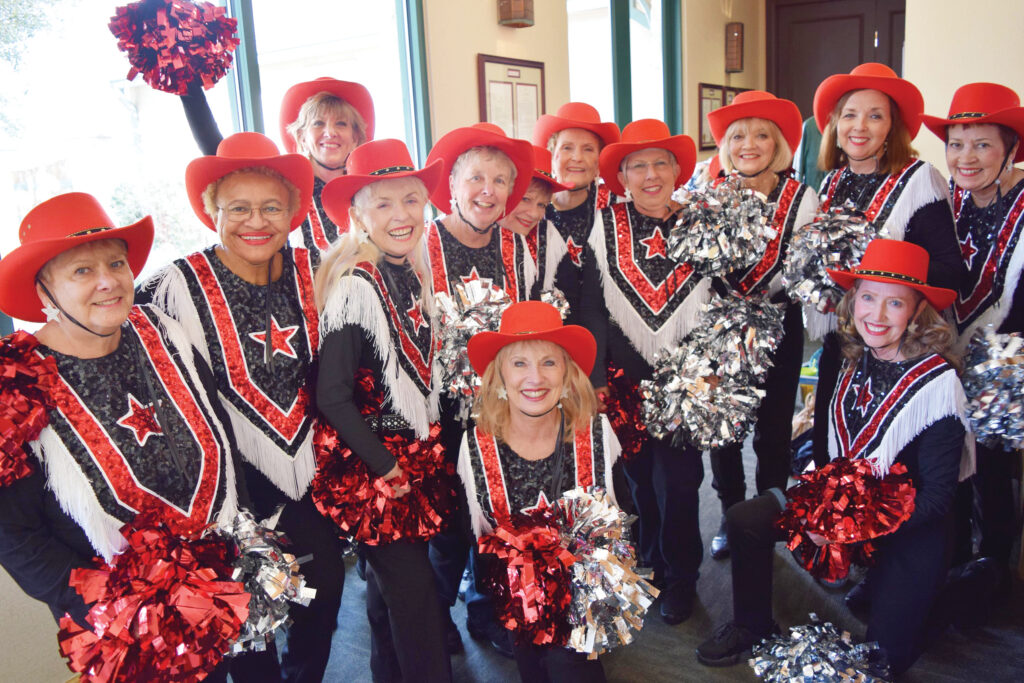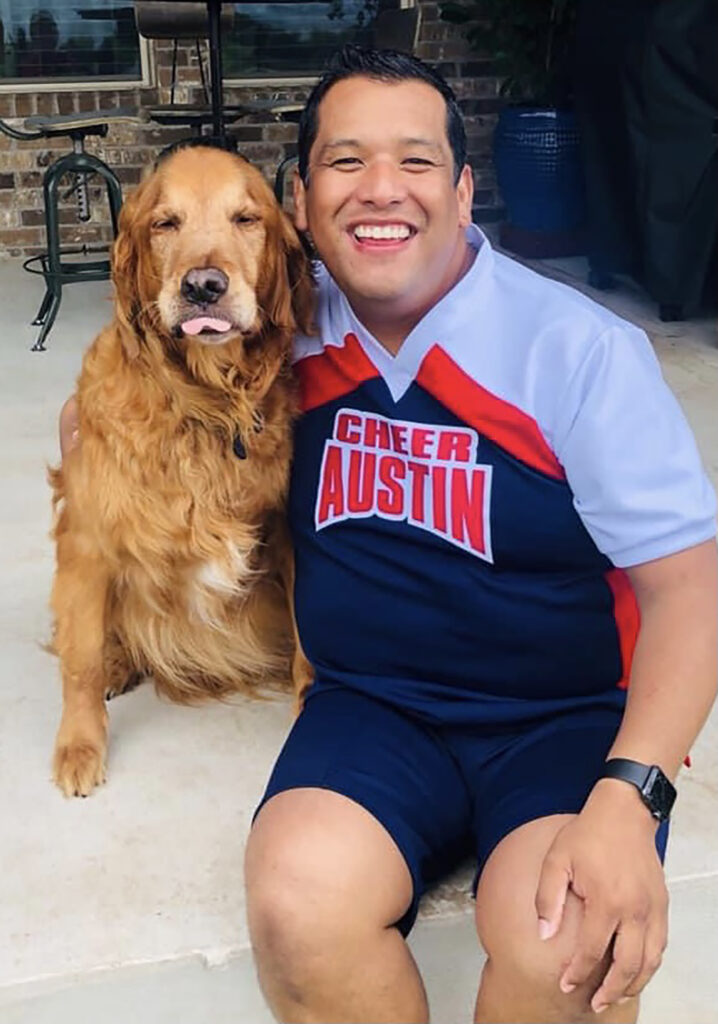There are many icons of American culture that did not originate in Texas, and cheerleading is one of them. But, like barbecue, pageantry, and law enforcement, Texas went and made it better.
You may already know the Dallas Cowboys Cheerleaders were not the first in the NFL, but they are about as famous around the world as Mickey Mouse so, whether that is the cause—or effect of the Lone Star love affair with cheerleading—the sport is still going strong at all levels.
It should surprise no one that in a state that loves football so much, those on the periphery also enjoy a sense of connection and identity as participants in the culture of Friday night lights. In decades past, cheerleading created a social aspect that allowed girls and women who did not play sports to feel connected to teammates and their school. In recent years, as cheerleading has been elevated to a competitive sport, Texas has been equally intentional about being bigger, more creative, and nailing the most challenging stunts.
BACK(FLIP)STORY
History books tell us organized cheerleading began at the University of Minnesota in 1898. Women were not invited to participate in the sport at all until 1923, but they brought the first tumbling and acrobatic elements to the routines.
THEN, TEXAS STEPPED IN
In 1939, the dean of Kilgore College in east Texas wanted to encourage more young women to enroll but also keep football fans in their seats during halftimes. With the help of Gussie Nell Davis, the first-of-its-kind Rangerette dance team brought entertainment to the field and set the bar for on-field performance. The Rangerettes are still the gold standard and the world’s best-known collegiate drill team, performing coast-to-coast in the United States and on frequent world tours.
By the 1940s and ’50s, when professional sports entertainment began to take shape, cheerleading was still a male-dominated activity and had remained fairly exclusive to collegiate football. They also began gracing collegiate cheerleading squads across the nation and pro teams eventually picked up the trend.
For its part, by 1948, cheerleading had grown so much at colleges and high schools that Lawrence Herkimer, a former cheerleader at Southern Methodist University, formed the National Cheerleaders Association, the organization that drew cheerleading off the sidelines and into the national spotlight.
Lawrence held his first camp in 1948 in Huntsville, Texas with 52 girls and one boy. His signature jump while a cheerleader at SMU—the Herkie—is still one of the most popular jumps for cheerleaders around the world today. Today, NCA is headquartered near Dallas and remains one of the largest and most influential camp and competition organizations, holding hundreds of camps nationwide every year and more than a dozen televised championships.
Herkie also created the PomPon and held the patent for the stick with colored paper designed to attract fans’ attention and be more visible on television. Herkie later created the “Spirit Stick” in 1957 as a reminder to teams of the importance of positive attitudes, leadership, and supporting the team and leading the fans. It is still a cherished award in cheerleading.
AMERICA’S SWEETHEARTS
While Herkie gave Texas the inroad to setting many standards for cheerleading, Dallas is what brought it to worldwide fame. Several NFL teams had cheer and pep squads in the 1960s and the Cowboys were no different.
The team’s Cow Belles and Beaux were a co-ed squad of local high school students who led traditional cheers on the sidelines. Then, in 1971, owner Tex Schramm, having watched the crowd’s reaction to exotic dancer Bubbles Cash walking down the steps in his new stadium, told his cheer director to find professional dancers who would add some glamour to the game.
The new dancers, and their star-spangled outfit, resulted in the birth of an image that changed sports entertainment forever, and that uniform has since been installed in the Smithsonian Institute as a permanent symbol of American culture. It did not hurt the DCC, or Texas’ reputation for being the best, when the ladies began appearing in television shows, USO tours, and even had their own DCC “Barbie” doll.
If that weren’t enough, you can watch or stream 15 seasons of “Making the Team” on the CMT network, which documents the annual tryout for those 45 hard-to-win spots on the Cowboys’ sidelines.
As popularity grew and tryouts for coveted spots everywhere got tougher, other not-so-flattering productions showed the world just how seriously Texas takes its cheerleading, including two television movies about the mom of a junior-high candidate who hired a hit man to kill the mother of a rival student. More recently, Netflix featured students at Navarro College in Corsicana in a docuseries about their journey to their 15th national championship. The show got mixed reviews for content, but was praised nationally for demonstrating the superior, but often-overlooked athletic skills of many in the sport to a nationwide audience.
OFF THE FIELD

Texas loves cheerleading so much that many towns have multi-generation squads that raise money as well as spirit. While technically a dance team, the Sun City Georgettes (top) bring joy and energy to audiences at parades, school assemblies, and more. They are an active group of over-55 ladies who love to dance and perform drill-style routines all over Central Texas.

But, if you are a purist, Cheer Austin is an all-volunteer, community-based 501(c)3. Director Ernie Barrera (pictured) wanted to be a cheerleader as a child but was told he should probably play football so he was not able to follow his dream. Then, at age 35, he saw several “Cheer” teams at a parade and joined Cheer Chicago. “I decided if I ever moved to a city without one, I would create it. I think for many people, particularly in Texas, we just never get over it, even as our opportunities seem to end when we leave school.”
Ernie’s former and woulda-been cheerleaders don uniforms, practice weekly, and perform routines and stunts at parties, 5Ks, and other events in the Austin metro area. Money they raise supports local small non-profits that provide direct care services for those with life-threatening challenges. Their beneficiary this year is Strong Family Alliance and they are holding tryouts right now, virtually, if you want to stretch out your Herkie one more time! (CheerAustin.org)
